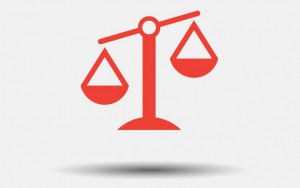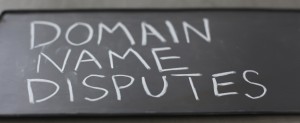In this blog post, Soumya Deshawar, a student of University of Petroleum and Energy Studies, analyzes the topic “Domain Name Dispute”. This blog explains the meaning of a Domain name dispute, how the Indian Legislation treats it, and how such a dispute can be avoided. It also provides the remedies for the same.
Introduction
The dispute of domain name is a conflict which arises when more than one individual or group believe that they have the right to register a particular domain name. Most frequently, a domain name dispute would arise when a domain name comparable to a registered trademark is registered by an individual or association who is not the trademark holder. All domain name registrars must follow the ICANN’s Uniform Domain-Name Dispute-Resolution Policy (UDRP)
Indian Legislation
Cybersquatting has been defined as “an act of obtaining deceitful registration with an intent to trade the domain name to the legal owner of the name at a premium” according to the court in the case of Manish Vij v. Indra Chugh [AIR 2002 Del 243].
The Information Technology Act, 2000 of India talks about several cyber crimes and has set up a special Cyber Crimes Cell. However, the Act strangely ignores the problem of domain name disputes and cybersquatting. The only saving grace for sufferers of such felonies is that domain names may be regarded as trademarks based on usage and brand status and so fall under the Trade Marks Act, 1999. However, not all domain names are trademarks. Several cases of Rediff, Yahoo, and Satyam have laid down some guidelines as stated below- 
- The offender should have sold/ offered its goods/ services in a way that misleads the public into thinking that the goods/ services of the respondent are in fact the plaintiff’s.
- Misrepresentation by the offender to the community should be proved.
- Loss/ probability of it should be proved.
Passing-off and Domain Name Disputes. Contrasting the action for violation of a trademark, under an action of passing off, the registration of trademark is not obligatory. Whereas that the action for violation is based on a legal right attained by the registration of a trademark, in an action of passing off it is vital that goodwill has been attained by usage of the trademark.
Options in a Dispute
Prioritize Important Domains
It may be that numerous domain names have been registered in a number of jurisdictions. If so it is probable that it will prove to be an expensive affair to recover all the domain names. Hence, it may be wise to prioritize the domain names that one finds particularly offensive.
Not Contesting the Registration
If the domain name is not vital, it may not be worth challenging. However, it is advisable to monitor the registration date and register the domain name if the holder lets the registration lapse.
Writing to the Registrant
It may be that a letter demanding the registrant to terminate and discontinue using the domain name may be sufficient to prompt them to transfer it for no compensation or for no more than out of pocket expenses, to avoid additional lawful action.
However, the registrant is not probably going to transfer the domain name if it is registered for a genuine reason or for the purposes of extracting a large sum of money from a trademark owner. Negotiating a value for the acquisition of the domain name may perhaps be the commercially practical solution, as a speedy acquisition may prove inexpensive and faster than any lawsuit or dispute resolution process.
A Link to your Site or a Disclaimer
The possessor of the domain name may agree, possibly for a minor sum, to have a link that directs the internet traffic which has erroneously reached their site, back to one’s website. As an alternative, a disclaimer may be displayed on their website declaring that it is in no way linked to the person’s business or his website. This is more expected if the registrant has not registered the domain name in bad faith or is engaged in an unconnected trade which does not compete with the people.
Use the Internet Service Provider’s Terms and Conditions
The operator may be in breach of its ISP’s terms and conditions, particularly if the site is being used for unlawful or immoral purposes. A person could then bring this to the attention of the ISP and request them for suspending the site. Although the ISP can’t transfer the domain name to the person, the registrant may be more eager to transfer the domain name for a equitable sum if holding on to the domain proves to be more troublesome than it is value.
Dispute Resolution
An appellant in a UDRP proceeding must establish the following three elements to succeed: 
- The domain name is indistinguishable or confusingly similar to a trademark or service mark in which the appellant has rights;
- The registrant does not have rights or legitimate interests in the domain name;
- The domain name has been registered and is being used in “bad faith”.
In a UDRP proceeding, a board will consider numerous non-exclusive aspects to assess bad faith, such as:
- Whether the registrant registered the domain name mainly for the purpose of selling, leasing, or otherwise handing over the domain name registration to the appellant who is the holder of the trademark or service mark;
- Whether the registrant registered the domain name to avoid the owner of the trademark or service mark from imitating the mark in a corresponding domain name, if the domain name holder has involved in an arrangement of such conduct;
- Whether the registrant registered the domain name chiefly for the purpose of disturbing the business of an opponent;
- Whether by using the domain name, the registrant has deliberately attempted to draw, for commercial improvement, internet operators to the registrant’s website, by generating a probability of confusion with the plaintiff’s mark.
The aim of the UDRP is to create an efficient process for resolving such clashes. It was intended that this process should be speedier and cheaper than a standard lawful challenge. The costs to hire a UDRP supplier to handle a complaint often start from around US$1,000 to $2,000.
If a party loses a UDRP proceeding, in many jurisdictions it may still get a claim against the domain name registrant under local law. If the registrant of a domain name loses a UDRP proceeding, he/she must file a complaint against the trademark owner within a period of ten days to avoid ICANN from transferring the domain name.
Requirements to bring an action under the UDRP
(1) Identical to or confusingly similar: The domain that is in question must be identical to or confusingly similar to a name, trade mark or service mark in which you have rights. Note that this can cover unregistered trademarks such as names of the personalities well-known.
(2) No legitimate rights or interests: The registrant must not have any legitimate right or interest of his own in the questioned domain name. Legitimate use is roughly when the domain name is being used (or being planned to be used) in connection with a bona fide offering of goods and services before the registrant of the trademark is aware of such a dispute.
Lawful distributors or licensees have been said to have legitimate rights, with unlawful users or those claiming to be an authorized site not having legitimate interests. But occasionally the arbitrator will give the registrant the advantage of the doubt, mostly when the domain is a generic word or the registrant by reason has a possible use. Other challenging areas in relation to legitimate interests are fan sites for celebs. These are usually thought to be legitimate not including the ones where they are being used for commercial advantage.
(3) Bad faith: The questioned domain must have been registered and used in evil faith. Both these essentials of bad faith must be demonstrated. The UDRP has set out a non- exhaustive list of what institutes bad faith. These consist of diverting users to other sites by creating a possibility of confusion; if the registrant has numerous domains registered; a method made to a party that would be interested in the domain demanding money or its worth significantly in excess of out of pocket expenditures; passive holding of a domain was held to establish bad faith if the impression that the domain was being open for sale was given and boards are progressively concluding that the domains are being held for sale; offering to sell the domain on an auction site has been interpreted as being in bad faith; however, on instances, the fact that a registrant has offered to trade the domain by auction, or accepted to negotiate a price when communicated about the dispute does not automatically establish bad faith for the purposes of UDRP; being tough to interact or undetectable has been interpreted as bad faith.
Court Action
This may well be the optimum course of action if no bad faith is exhibited, bad faith is hard to prove or one wants to pursue costs and/or compensations from the Registrant for their usage of his mark. It must be noted that due to the worldwide nature of the internet, care must be taken for ensuring that the court used is the most appropriate forum with the suitable choice of law.
Advantages of Court Action
Compensations or an account of profits can be given in court actions. Brand holders can also claim back the expenses of bringing proceedings, where successful. However, it is likely that many individual registrants may not have sufficient assets to cover the costs of losing in court, not to mention the difficulties of tracking the registrant down. The court also has the power to issue injunctions against any future registrations of offending domains or in emergencies if it is convinced that there is a real risk of damage to the claimant’s business.
Disadvantages of Court Action
In general, these consist of the cost and length of proceedings. Conversely, where it is a clear case of cybersquatting, the problem can be dealt with by summary judgment thus decreasing delay and, if an application for recovery of costs from the squatter is successful, excluding the cost to the brand holder.
Trade Mark Infringement
If the domain name does not have an active website or is not being utilized for the sale of goods or services, it may be tougher to establish that the trademark is being used “in the progression of trade”. It may also be hard to prove unfair advantage, although the up surged hits on a website could be assumed to increase the domain name’s worth. It may be easier to establish “detriment” to the distinguishing character or status of the mark.
Defamation
If defamatory material has been posted on a website, an action of defamation could be raised up. Conversely, it may be problematic to track down the person accountable and they may have limited means. Although the aggrieved one could claim that the ISP eliminates the defamatory material, failure of the ISP to eliminate it may make them answerable.
Purchasing
Registering every accessible domain name extension is not at all times possible or indispensable even for multinational organizations. Registrations of ccTLDs and gTLDs must be targeted to the markets in which either the company will function or the trademarks will be used, or where the danger of infringement by cyber-squatters is quite high. Many jurisdictions have registration requirements that make it very tough for organizations not functioning in that jurisdiction, or not holding trademarks being covered that jurisdiction, from registering a domain name there. The danger of falling target to an expert cyber squatter is not much; however a rival business with the similar trademark rights falling in that jurisdiction may still attain the domain name before any person.
Register Common Misspellings
If a name is frequently spelt wrongly, it may be worthwhile to register the wrong spelling in order to avoid typo squatters.
Register the Domain Name as a Trade Mark
If a person does not already possess a registered trade mark, it is advisable for him to register his domain name as a trade mark. It is probable to be successful where the domain name is unique or has acquired a secondary meaning through prior use. Having a registered trade mark would support in any dispute resolution processes to recover a similar domain name from another registrant.
Consolidate Domains into One Company in the Group
It is a decent practice for a company to have the accountability for ensuring that all the domain names for a group are re-registered.
Active Monitoring
It is a great idea to actively control and check from time to time if any comparable domain names have been registered. There are services existing which will actively monitor all fresh registrations and renew all the domain names.
Searches Prior to Registration
A search could be made to make sure that any newly registered domain names are not infringing any trademarks as a trade mark owner may be able to direct the transfer of the domain names, mainly if it is an undertaking in a related trade/business.
 Serato DJ Crack 2025Serato DJ PRO Crack
Serato DJ Crack 2025Serato DJ PRO Crack














 Allow notifications
Allow notifications



